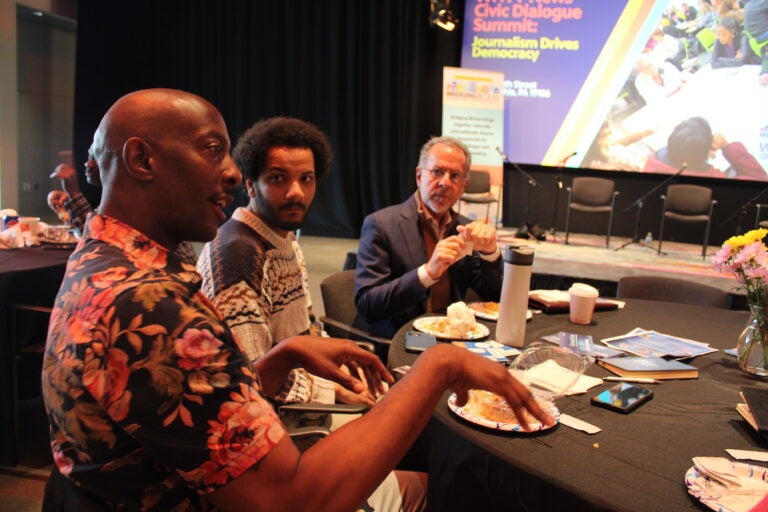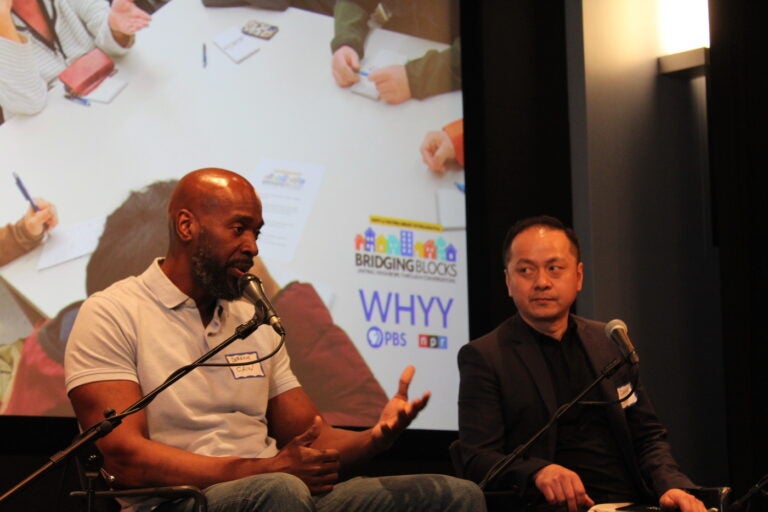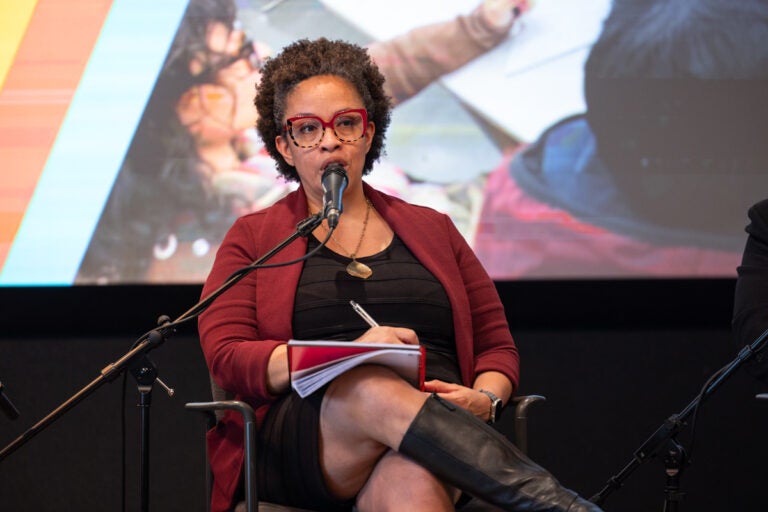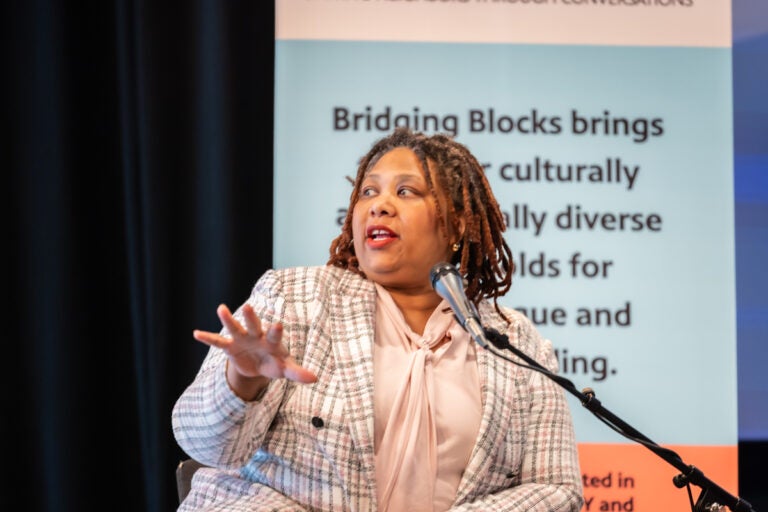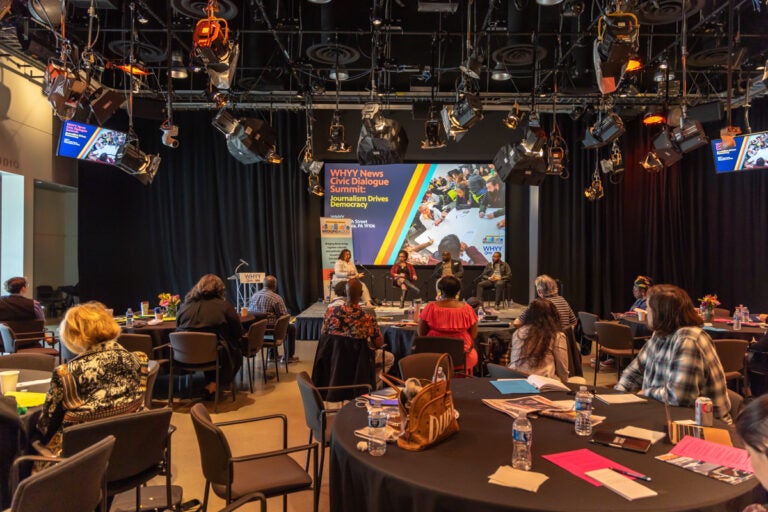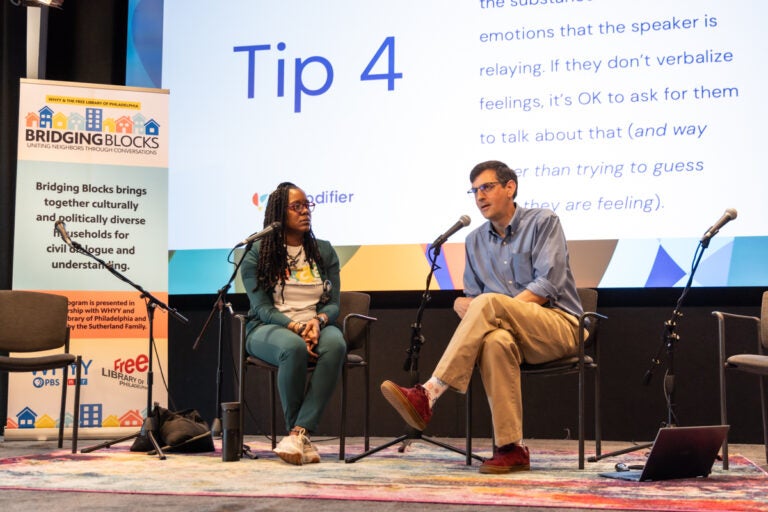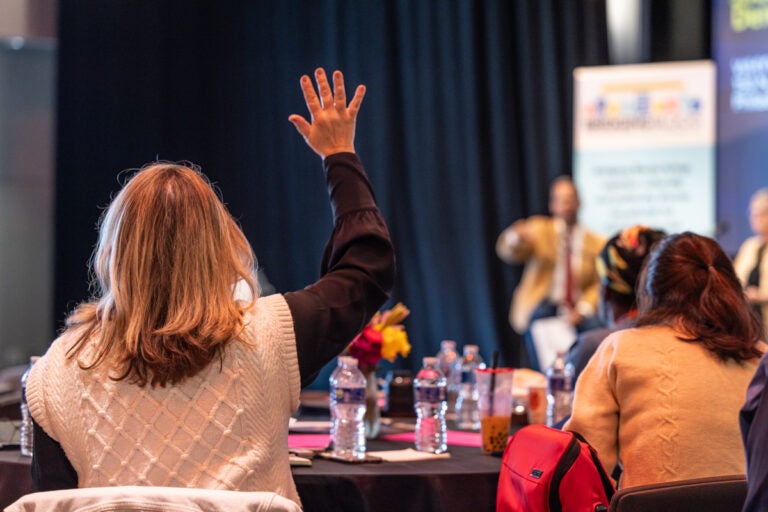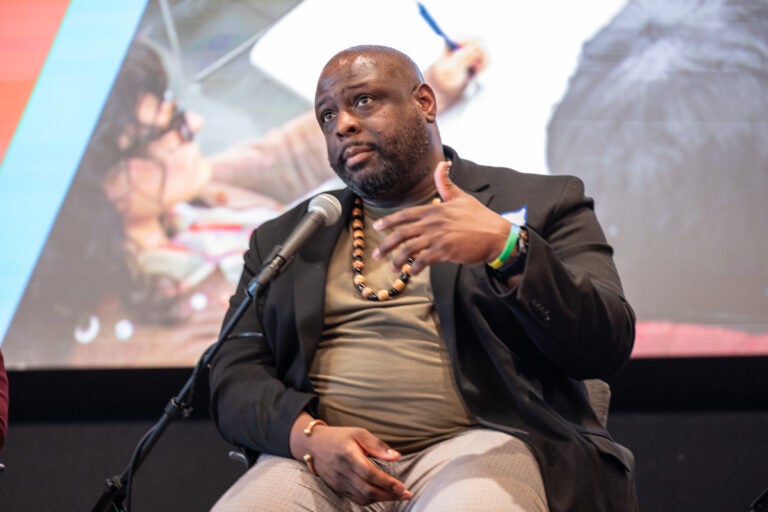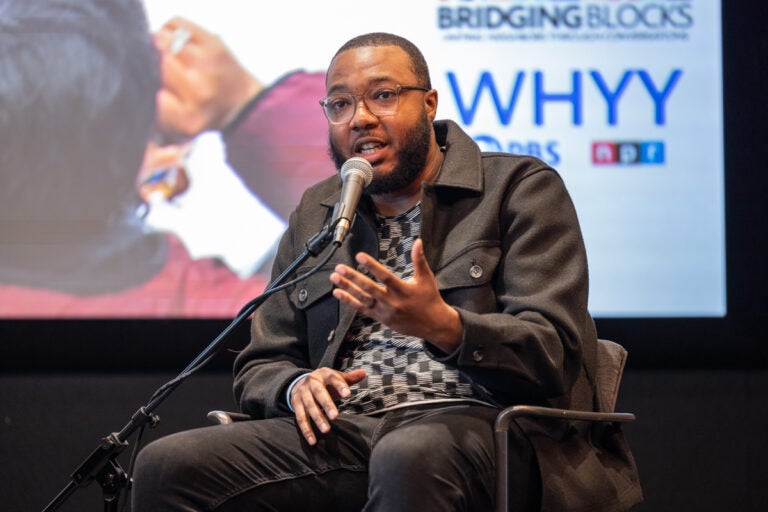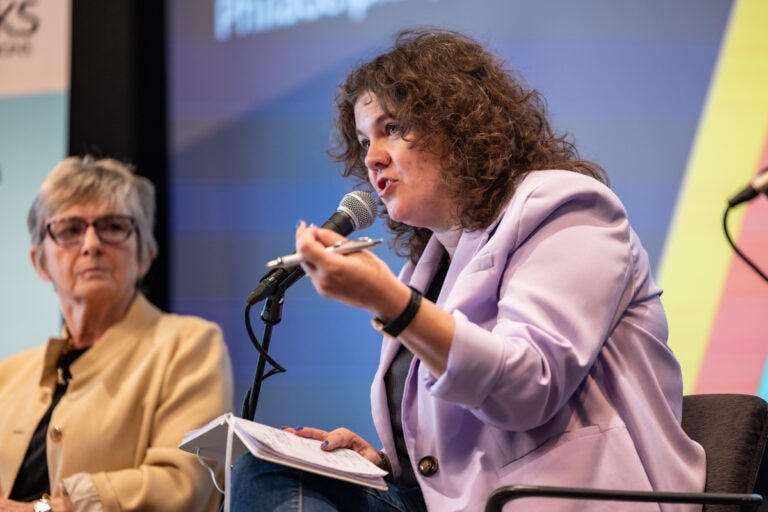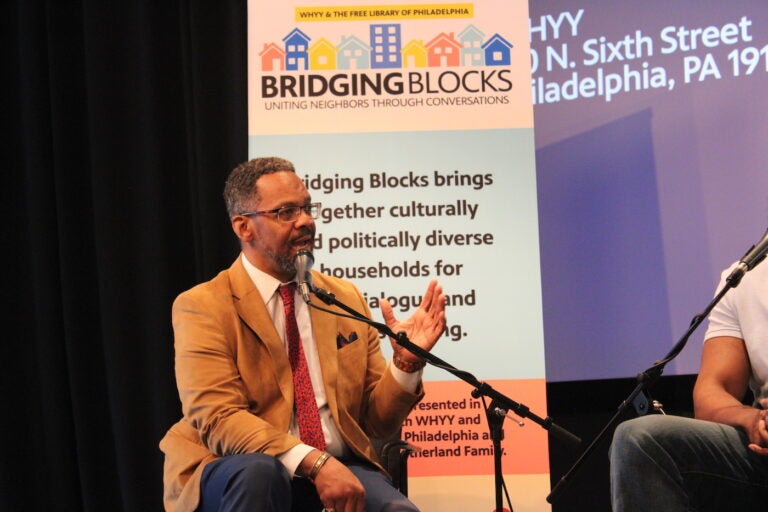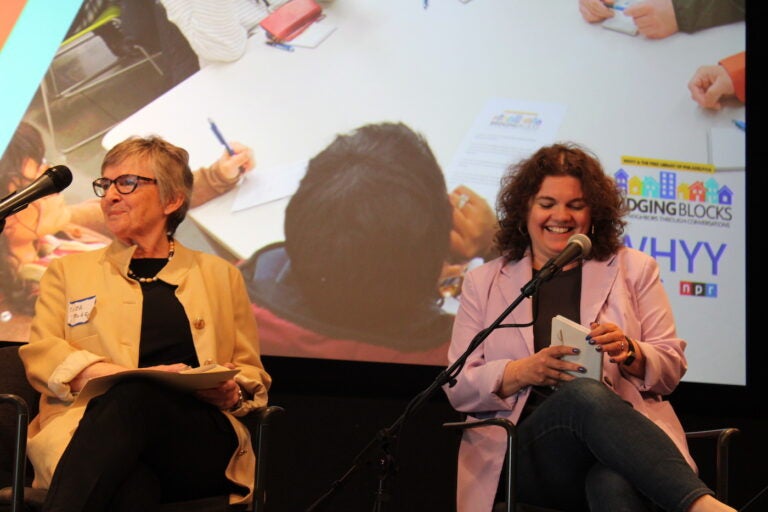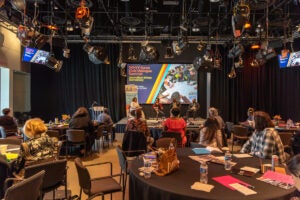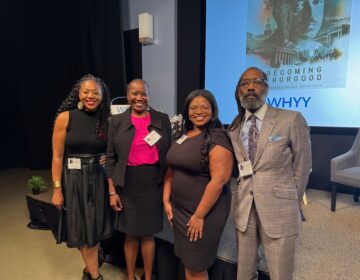5 key takeaways on civic dialogue and journalism from WHYY News summit
The conference boasted a full roster of local journalism experts who shared their thoughts on cultivating civic dialogue with audiences.
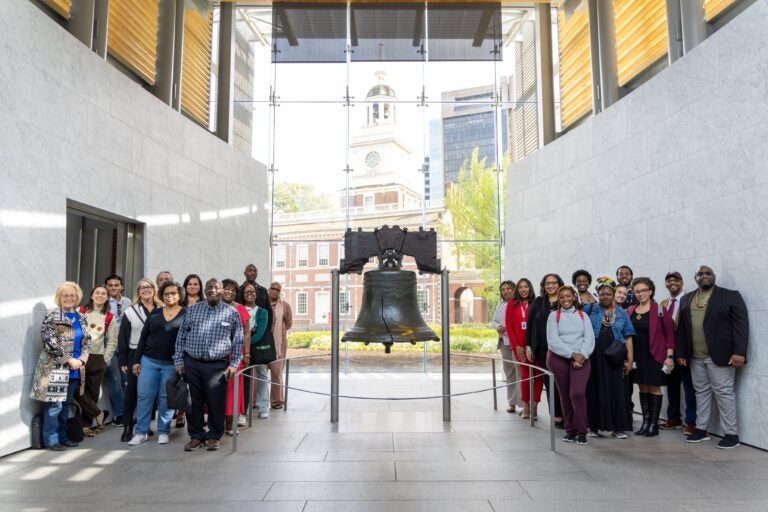
Participants in the WHYY News Civic Dialogue Summit at the Liberty Bell. (Kimberly Paynter/WHYY News)
From Philly and the Pa. suburbs to South Jersey and Delaware, what would you like WHYY News to cover? Let us know!
One hundred people gathered together Friday and Saturday for the WHYY News Civic Dialogue Summit: Journalism Drives Democracy. The free event was presented by WHYY News and Bridging Blocks, a partnership between WHYY News and the Free Library of Philadelphia that brings diverse households together to discuss relevant community issues.
Attendees heard from experienced journalists and media makers on topics ranging from funding options and community partnerships to engagement best practices and facilitating civic dialogue events.
Here’s a round-up of the top takeaways on how newsrooms can foster civic dialogue — and why it matters.
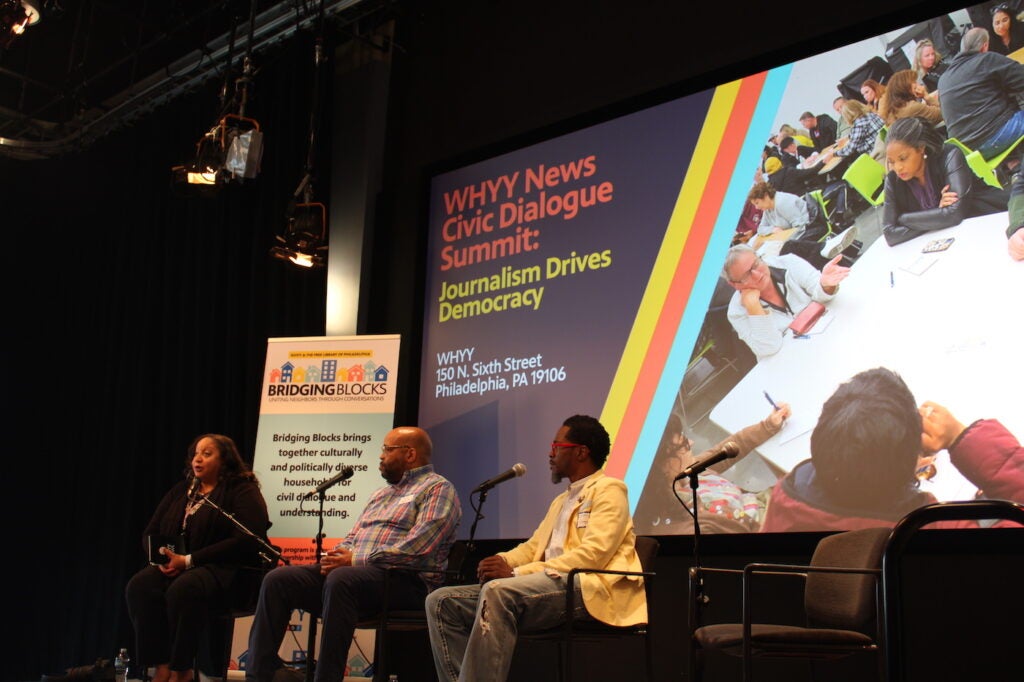
1. Build partnerships beyond the newsroom
Panelists and participants agreed that in order to develop better and stronger relationships with different communities and audiences, news organizations need to team up with non-journalism organizations to connect with communities.
Shawn Mooring, head of Philadelphia programs at the Lenfest Institute of Journalism, talked about the Every Voice Every Vote initiative, launched in 2022. It was the first time, Mooring said, that Lenfest gave grants to non-journalism organizations “because it was about how can we ensure all corners of this city are touched” ahead of the 2023 municipal elections.
“[EVEV] was focused on both making sure that all voices were heard, that we were not going with just the usual suspects and the large organizations that would be covering the elections anyway, but really to invest in making sure that communities were also engaged and looking at community organizations as trusted messengers,” he said.
Reaching out to voters in different areas of the city via partnerships with organizations that provide services to them was important, he noted, because many people have “a different level of engagement” in the places where, for example, they pick their kid up after school, versus news organizations that they may not follow or engage with.
The goal of this kind of partnership, Mooring said, is to establish a reciprocal relationship. For EVEV events and stories, they focused on not just providing information to people about the elections and candidates, but also gathering input from residents on the issues that are most important to them.
“As we go into this iteration it’s really around civic engagement, how are we ensuring that those issues that were raised in all the different corners of our city are being addressed, and what does that mean and how do we continue to create opportunities for people to participate in the governmental process,” Mooring said.
2. Show up where people are digitally
Panelists shared how news organizations can do more to meet their audiences on social media and messaging platforms.
Daniel Tsao, president and publisher of New Mainstream Press, which publishes Metro Chinese Weekly and Metro Viet News, told audience members about how his news organization chose to engage their audience on a social media platform, and marry digital and print production in an innovative way.
Tsao explained that many Chinese Americans use WeChat to talk to one another, stay in touch and share information. Around 2015, he realized that the Chinese diaspora was primarily consuming news through WeChat, more so than subscribing to weekly print publications such as Metro Chinese Weekly.
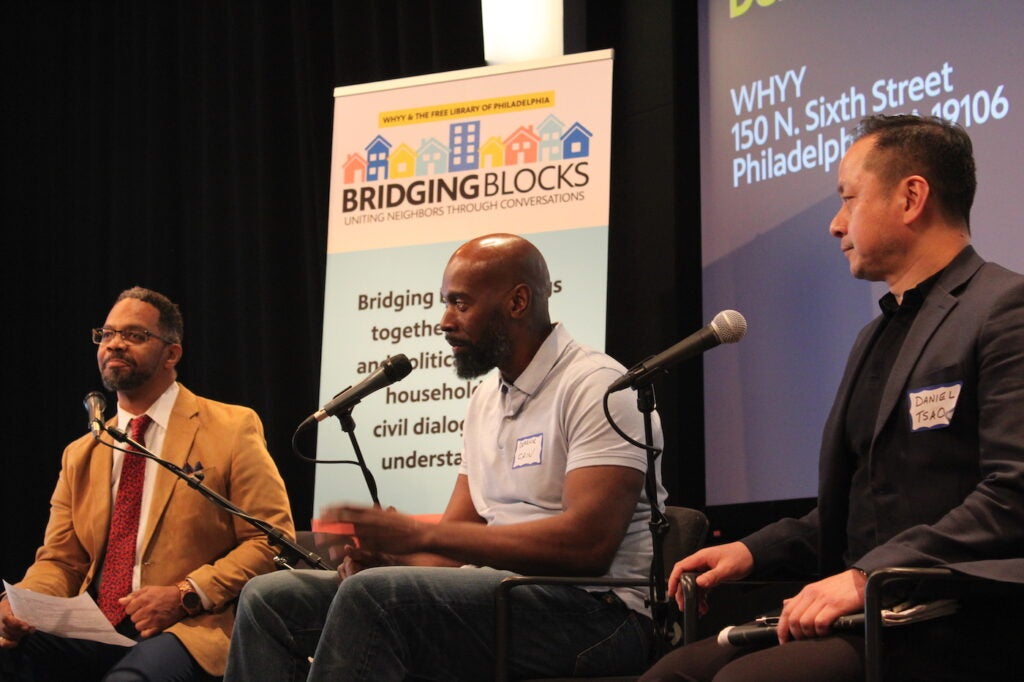
The news organization went through a “complicated process,” Tsao said, to open a certified WeChat account. Since they started publishing news on the platform, New Mainstream Press’ followers have grown to 50,000 — 80-90% of whom are Chinese Americans in the Greater Philadelphia region.
Tsao said sharing news articles on WeChat allows his organization to reach more people — with stories receiving upwards of 8,000 views — and publish news every day.
The platform also offers ways for readers to connect with one another.
3. Show up in person — before a crisis
Panelists stressed that journalists and news organizations need to cultivate relationships with communities outside of a crisis or a deadline.
Liza Gross, senior adviser of Solution Journalism Network, described her experience working to win back the trust of Mexican and other Latino communities in Chicago as publisher of Exito!, the Spanish-language publication of the Chicago Tribune.
“You need to be there, you need to support all the time, and not always for a reason, you just need to be there,” Gross said. “Don’t go there when the story has happened, don’t go there when the crisis is happening just to cover it. Just go there for the parties, go there for the celebrations, put in an appearance.”
She noted that being present in different communities can also be helped by working with an ambassador, a trusted leader or a person who can help build the bridge between the reporter/news organization and the communities.
“Listening means don’t try to go there to try to impose your narrative,” Gross said.
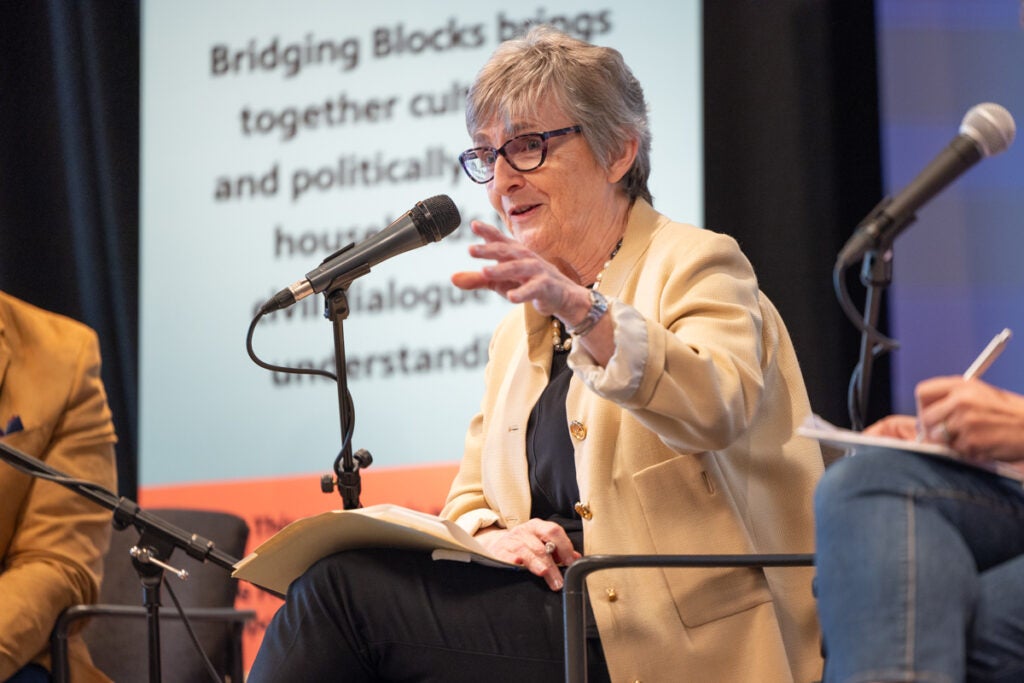
4. Respect everyone’s lived experiences
“It’s hard to build trust in communities where it’s been so marginalized for so many years,” said Derrick Cain, director of community engagement at Resolve Philly. “It’s not just going to happen overnight.”
“I always stress that when news organizations ask, ‘How do I build in community engagement throughout my reporting process or our organization’s reporting process,’ it starts with just going out in the community and knowing the communities you’re reporting on.”
Reporters don’t always know the communities they’re covering, Cain said. He recommended some small but powerful ways to change the extractive model that has been all too common in journalism, including saying thank you and explaining the process and publication steps to the people you speak with to make them feel more comfortable.
“Ask questions, listen to understand. Understand that this person that you’re talking to is sharing their lived experience. It’s not just a piece, it’s not just a quote. Understand that this is a person’s life,” Cain said. “The humanizing piece is how you build community engagement throughout your process, in addition to other tactics.”
5. Cultivate transparency
Not everyone knows how newsrooms work, or how decisions are made about what to cover and how. Be willing to pull back the curtain and share more about how your newsroom operates. How you work as a journalist can educate news consumers and clarify why certain stories are or aren’t reported, what goes into that reporting process, and how the information included in a particular story has been verified.
“We’re in it so we know it, but if you ask the regular person on the street, they have no idea what it means to get sources or to verify information or to research why we didn’t report a certain thing because we didn’t verify it,” said Vaughn Johnson, social platforms editor at the Philadelphia Inquirer.
“I think educating people and pulling back the curtain a little bit about what goes into creating a story for journalism I think would help a lot of people understand where we’re coming from.”

Get daily updates from WHYY News!
WHYY is your source for fact-based, in-depth journalism and information. As a nonprofit organization, we rely on financial support from readers like you. Please give today.



